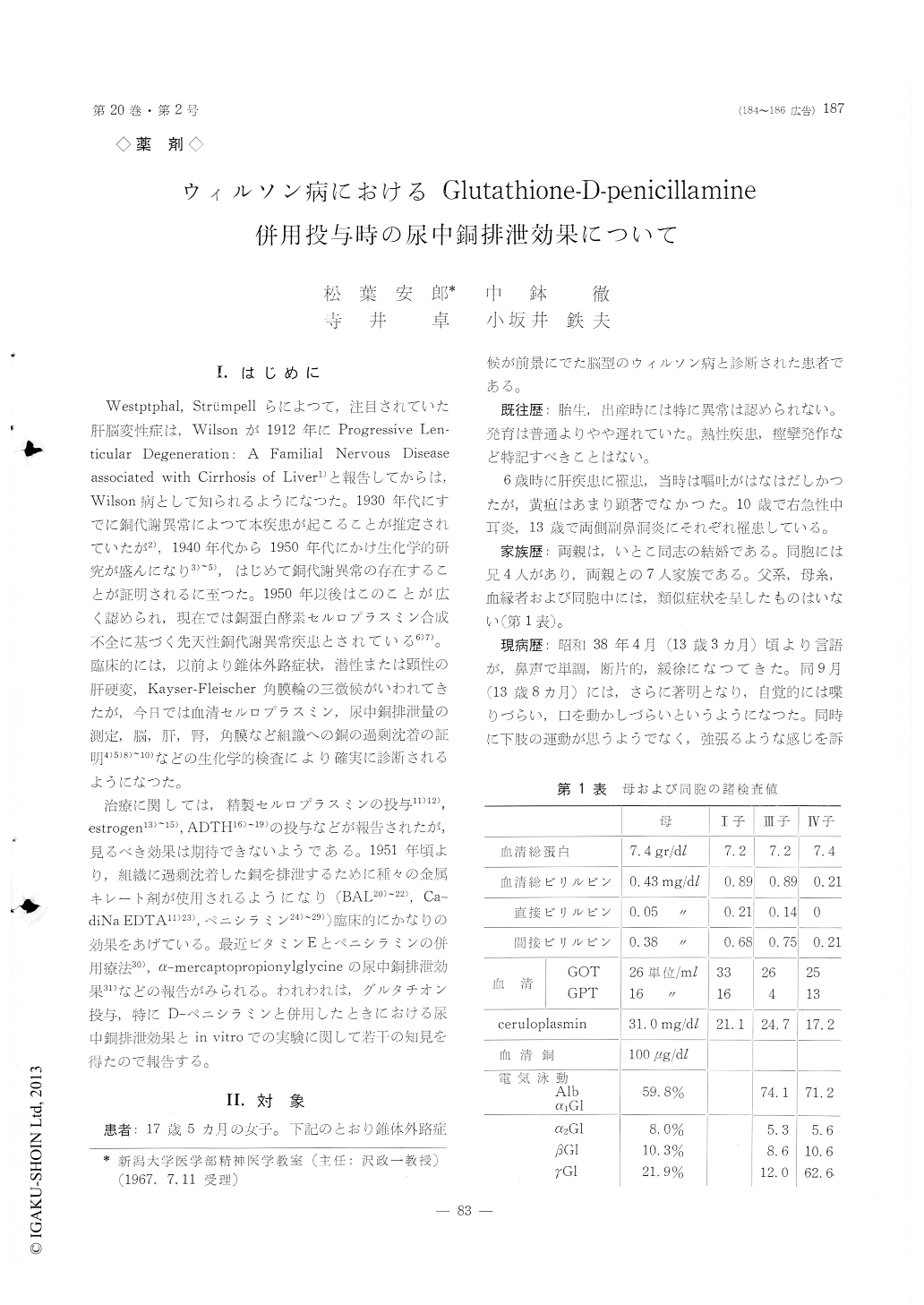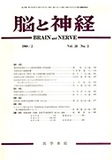Japanese
English
- 有料閲覧
- Abstract 文献概要
- 1ページ目 Look Inside
I.はじめに
Westptphal,Strtimpellらによつて,注目されていた肝脳変性症は,Wilsonが1912年にProgressive Len—ticular Degeneration: A Familial Nervous Disease associated with Cirrhosis of Liver1)と報告してからは,Wilson病として知られるようになった。1930年代にすでに銅代謝異常によつて本疾患が、起こることが推定されていたが2),1940年代から1950年代にかけ生化学的研究が盛んになり3)〜5),はじめて銅代謝異常の存在することが証明されるに至つた。1950年以後はこのことが広く認められ,現在では銅蛋白酵素セルロフラスミン合成不全に基づく先天性銅代謝異常疾患とされている6)7)。臨床的には,以前より錐体外路症状,潜性または顕性の肝硬変,Kayser-Fleischer角膜輪の三徴候がいわれてきたが,今日では血清セルロプスミン,尿中銅排泄量の測定,脳,肝,腎,角膜など組識への銅の過剰沈着の証明4)5)8)〜10)などの生化学的検査により確実に診断されるようになつた。
治療に関しては,精製セルロプラスミンの投与11)12),estrogen13)〜15,ADTH16)〜19)の投与などが報告されたが,見るべき効果は期待できないようである。1951年頃より,組織に過剰沈着した銅を排泄するために種々の金属キレート剤が使用されるようになり(BAL20)〜22),Ca—diNa EDTA11)23),ペニシラミン24)〜29)臨床的にかなりの効果をあげている。最近ビタミンEとペニシラミンの併用療法30),α—mercaptopropionylglycineの尿中銅排泄効果31)などの報告がみられる。われわれは,グルタチオン投与,特にD—ペニシラミンと併用したときにおける尿中銅排泄効果とin vitroでの実験に関して若干の知見を得たので報告する。
1) Although a slight increase in urinary copper excretion may be occurred during administration of glutathione the effect of this regimen is difficult to evaluate by a combined administration schedule of both glutathione and D-penicillamine. How-ever, tissue copper is excreted and appears in urine in larger amounts than D-penisillamine.
2) Possible mechanism of glutathion as ceruloplasmin oxydase activity inhibititor is decolorization of purple PPD+ product.
3) I atom of Copper (Cu2+) react with 4 molecules of glutathione in 0.1 N-acetic acid-sodium, ace-tate (pH 5.5) and veronal-Na buffer (pH 7.4)
4) It seems that side effects of D-penisillamine and hepatic symptom of Wilson's disease are improved, dosage of D-penicillamine can be minimized, by glutathione administration (Ca. 300-500 mg ave-rage).

Copyright © 1968, Igaku-Shoin Ltd. All rights reserved.


